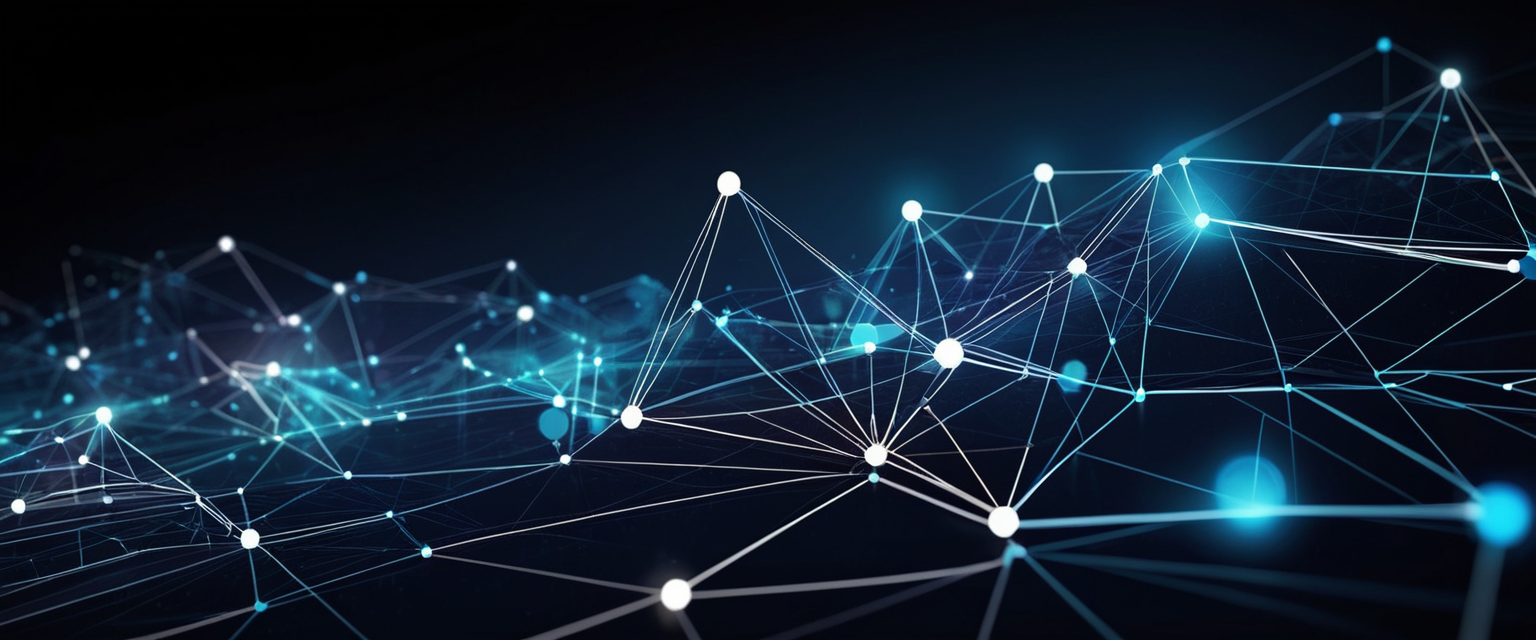
The discovery of a data breach marks the beginning of a complex and dangerous journey for stolen information. Once cybercriminals gain access to organizational data, the information does not simply disappear—instead, it enters a sophisticated underground economy characterized by well-established marketplaces, specialized intermediaries, and multiple distribution channels that have evolved significantly over the past decade. Understanding this journey is critical for organizations seeking to implement effective dark web monitoring, exposure management, and rapid response capabilities. The lifecycle of stolen data encompasses multiple stages: initial acquisition through various attack vectors, rapid processing and packaging into saleable commodities, distribution through encrypted networks and marketplaces, trading among criminal actors, and ultimately exploitation through fraud, identity theft, and further attacks. According to research examining this underground ecosystem, cybercrime is projected to cost the global economy $10.5 trillion annually by 2025, with a significant portion of this financial damage linked to stolen data transactions on illicit marketplaces. This report provides a comprehensive examination of how stolen data travels after a breach, the infrastructure that facilitates this movement, the mechanisms for detecting exposure, and the critical strategies organizations must employ to monitor and respond effectively.
The Initial Breach: Multiple Vectors for Data Theft
The journey of stolen data begins long before files appear on dark web marketplaces. Cybercriminals employ diverse methods to initially compromise organizational systems and extract sensitive information. Understanding these acquisition methods is essential for both preventing breaches and implementing appropriate monitoring mechanisms. Organizations face threats from multiple vectors simultaneously, each presenting distinct challenges for security teams attempting to detect and prevent unauthorized data access and exfiltration.
Primary Attack Vectors and Credential Compromise
The most common method for gaining initial access to organizational networks involves exploiting compromised credentials, which has risen dramatically in recent years as a preferred attack vector. Research from Mandiant’s M-Trends 2025 report revealed that stolen credentials are now the second highest initial infection vector, making up 16% of investigations, a significant increase from previous years. These credentials are typically obtained through several mechanisms, including infostealer malware infections on employee devices, phishing campaigns that trick users into revealing login information, and previous data breaches where password reuse enables attackers to access multiple organizations. The appeal of credential-based attacks lies in their efficiency and the legitimate appearance they provide—once an attacker logs in with valid credentials, their activity blends seamlessly with normal user traffic, making detection extraordinarily difficult.
Infostealer malware represents a particularly prolific source of compromised credentials that fuel the initial access ecosystem. These sophisticated pieces of malicious code are designed to infiltrate devices without user knowledge and systematically harvest sensitive information including login credentials, browser-stored data, cryptocurrency wallets, and system configuration details. Popular infostealer families such as RedLine, Vidar, Raccoon, and Lumma Stealer have become dominant forces in the cybercriminal ecosystem, sold through Malware-as-a-Service (MaaS) models that lower the barrier to entry for aspiring attackers. On Russian Market alone, the volume of infostealer logs available for sale has exploded, increasing 670% between June 2021 and May 2023, demonstrating the scale at which compromised credentials are being harvested and monetized. Organizations frequently discover that their employees’ credentials appear on dark web marketplaces weeks or even months after the initial malware infection, creating a significant window of vulnerability before compromise is detected.
Remote Access Exploitation and Network Vulnerabilities
Another critical initial access vector involves exploiting exposed remote access infrastructure, particularly Remote Desktop Protocol (RDP) and Virtual Private Network (VPN) services. Research indicates that exploiting Microsoft Remote Desktop Protocol (RDP) accounted for more than half of all ransomware infections, making it the single most dangerous attack surface for organizations that fail to adequately secure these services, as detailed in research on how Initial Access Brokers enable ransomware attacks. Specialized criminal groups use automated scanning tools like Shodan to identify Internet-facing RDP ports, and once located, they employ brute-force attacks or leverage stolen credentials from infostealer operations to gain access. Similarly, VPN vulnerabilities and exposed VPN credentials have become lucrative targets, with Initial Access Brokers (IABs) actively scanning for and exploiting these services to establish persistence on victim networks. The pandemic-accelerated shift to remote work expanded the attack surface considerably, as organizations rapidly deployed remote access capabilities often without implementing fundamental security measures like multi-factor authentication (MFA).
Data Exfiltration During Compromise
Once initial access is established, cybercriminals focus on identifying, locating, and extracting high-value data. This phase typically involves reconnaissance activities to map the network, privilege escalation to access more sensitive systems, and targeted data exfiltration focused on the most valuable information types. In ransomware attacks incorporating double extortion tactics, attackers now routinely spend weeks or even months conducting thorough reconnaissance and identifying the most sensitive, high-value data before deploying encryption payloads. This deliberate approach stems from the recognition that companies are often willing to pay substantially higher ransoms when the threat includes exposure of particularly sensitive information such as customer databases, financial records, or proprietary research. Attackers employ sophisticated exfiltration techniques including use of legitimate cloud storage services, encrypted tunnels, and fragmented data transfers designed to avoid triggering security alerts that might be associated with unusual data volume movements.
Processing and Preparation: Transforming Raw Data into Commodities
Once stolen data reaches attackers’ infrastructure, it undergoes a systematic transformation process that converts raw information into marketable commodities. This processing phase is critical to understanding how stolen data accelerates through the underground economy and why rapid detection is so important.
Data Cleaning, Encryption, and Bundling
The first step in preparing stolen data for sale involves cleaning and organizing the information to remove identifying metadata and structure it in ways that maximize value for potential buyers. Attackers encrypt the data using strong encryption protocols to protect it during transit and storage, ensuring that even if law enforcement intercepts the files, the content remains inaccessible. The encrypted data is then packaged into organized bundles, often categorized by data type, victim organization, or geographic region. For credential data harvested by infostealer malware, attackers parse the stolen information to extract valid username and password combinations, sorting them into “combo lists” organized by the services from which the credentials originated—banking services, email providers, cryptocurrency exchanges, and social media platforms represent particularly high-value categories.
The sophistication of this processing pipeline reflects the professionalization of cybercrime. Rather than individual actors handling the entire process from theft to sale, specialized criminal actors have developed the equivalent of assembly-line operations. Researchers tracking activity on underground forums have discovered dedicated services focused solely on parsing and organizing infostealer logs, charging fees to perform these technically demanding tasks for less-experienced criminals. This specialization has dramatically lowered the barrier to entry for would-be data sellers, enabling even relatively unsophisticated attackers to monetize stolen information effectively.
Pricing and Valuation Based on Data Characteristics
During the preparation phase, attackers assess the value of their stolen data and determine appropriate pricing based on several factors including freshness, completeness, demand, and the privilege level associated with compromised credentials. A single compromised credit card can be sold for as little as $10, while full identity profiles—often called “fullz”—can fetch hundreds of dollars. The pricing dynamics reflect real-time market conditions, with premium prices commanded for freshly compromised data and significant price depreciation as breaches become older and the data more widely distributed through the criminal underground.
Research into dark web data pricing reveals a complex pricing structure that reflects underlying economics of cybercrime. Credit card details sell for $5 to $120 depending on card type and associated information, bank account access ranges from $100 to $3,000 depending on likely account balance and credit availability, and Social Security numbers can be purchased for as little as $0.20 to $5 per number. More sophisticated data packages command substantially higher prices—compromised corporate databases can be worth thousands of dollars, and access to organizations through VPN or RDP connections can range from $50 to $2,000 depending on the organization’s revenue and strategic importance. Healthcare records represent the most valuable personal data, selling for up to $500 or more per comprehensive record due to the rich combination of personally identifiable information and medical history enabling sophisticated fraud schemes.
The valuation process also considers the source of the data breach. Data obtained from well-known breaches or large-scale infostealer operations may sell at lower prices due to oversaturation in the market. Conversely, data from targeted attacks against specific high-value organizations or data with unique characteristics enabling specialized fraud—such as executive credentials or financial system access—commands substantial premiums. Initial Access Brokers offering direct network access to organizations have observed pricing fluctuations based on organizational characteristics, with access to financial institutions commanding higher prices than access to retail organizations.
Dark Web Marketplaces: The Underground Commerce Infrastructure
The transformation of stolen data from raw commodity to actively traded asset occurs within a sophisticated network of dark web marketplaces and forums that function as the backbone of the underground economy. These platforms have evolved considerably from the early days of Silk Road, developing increasingly professional features designed to facilitate trust and efficiency among criminal actors.
Architecture and Operational Models of Dark Web Markets
Dark web marketplaces operate as hidden websites hosted on the Tor network, accessible only through the Tor Browser and other specialized anonymizing software. The entire ecosystem is built on anonymity primarily achieved through networks like Tor and the Invisible Internet Project (I2P), with Tor routing user traffic through a series of encrypted relays that effectively mask users’ IP addresses and locations, making it difficult for law enforcement to identify operators on these hidden “.onion” sites. The most successful dark web marketplaces function remarkably similarly to legitimate e-commerce platforms, incorporating features such as vendor reputation systems, escrow services, search filters, and customer review systems. These features serve a critical function in a market where traditional legal recourse is impossible and fraud among criminals is rampant—the reputation systems and escrow mechanisms create trust relationships that allow transactions to proceed despite the inherent distrust characterizing criminal interactions.
Most contemporary dark web marketplaces employ one of two operational models: escrow marketplaces where anyone paying a vendor bond can sign up and begin selling across diverse product categories, or specialized autoshops focused on automated sale of digital products such as financial data, login credentials, and remote access with minimal human interaction. Escrow marketplaces like the recently seized Nemesis operated successfully for years by providing administrative infrastructure while allowing thousands of independent vendors to conduct transactions. Autoshops, by contrast, offer extremely high transaction volumes—Russian Market alone hosts millions of infostealer logs available for immediate automated download—but provide minimal buyer-seller interaction or negotiation.
Payment Methods and Cryptocurrency Laundering
Virtually all dark web market transactions rely on cryptocurrencies to maintain anonymity and avoid traditional financial system oversight. Most transactions utilize Bitcoin (BTC) and Monero (XMR) due to their pseudonymous nature, though Monero has increasingly become the preferred cryptocurrency for sophisticated operators due to its superior privacy features. Bitcoin, while providing pseudonymity, maintains a permanent public ledger of all transactions, enabling sophisticated law enforcement analysis to trace cryptocurrency movements and potentially identify involved parties. In response to law enforcement advances in Bitcoin tracing, Monero has become the most widely adopted privacy coin for dark web transactions in 2025, as its protocol obfuscates transaction details and offers the enhanced anonymity that sophisticated criminal operators demand.
To further evade detection, cybercriminals employ mixing services and tumbling techniques that obfuscate transaction trails, making it difficult for law enforcement to track illicit funds. These services accept cryptocurrency from multiple sources, mix it within large liquidity pools, and redistribute it to new addresses, breaking the transaction trail that would otherwise connect specific market transactions to specific actors. Despite these advanced techniques, law enforcement has demonstrated increasingly sophisticated capabilities in cryptocurrency forensics, particularly when criminals attempt to convert cryptocurrency into fiat currency through centralized exchanges—the regulatory friction points where anonymity breaks down and transactions can be traced and investigated.
Evolution and Market Dynamics
The dark web marketplace ecosystem has demonstrated remarkable resilience despite repeated law enforcement disruptions. When major marketplaces such as Hydra, AlphaBay, and Dream Market have been seized or taken down, vendors and buyers rapidly migrate to replacement platforms, creating a decentralized ecosystem where specific marketplace administrators matter less than the underlying infrastructure. Research examining vendor flows between marketplaces revealed that digital marketplaces on the darkweb are highly connected, with the flow of vendors across marketplaces creating a network that links almost all markets into a single component, with nearly all marketplaces directly or indirectly connected to one another through vendor flows. This network structure means that the disruption of any single marketplace causes vendor migration that ultimately strengthens remaining platforms, as consolidated marketplaces benefit from increased liquidity and vendor activity.
By 2025, prominent dark web marketplaces include Abacus, which was long considered the largest Western darknet market with over 40,000 product listings and an estimated market value around $15 million until mid-2025; STYX Market, a specialized marketplace focused on financial fraud and stolen data; WeTheNorth, emphasizing security and community vetting; and TorZon, a comprehensive multi-purpose marketplace launched in September 2022 that rapidly rose to prominence as a successor to AlphaBay, offering a broad spectrum of illicit products including drugs, fraud data, hacking tools, and counterfeits. These marketplaces collectively facilitate billions of dollars in criminal transactions annually, with dark web market revenues reaching $1.7 billion in 2023 following recovery from Hydra’s takedown.
The Role of Initial Access Brokers and Credential Distribution Networks
Between the theft of data and its appearance on general dark web marketplaces exists a specialized ecosystem of Initial Access Brokers (IABs) who specialize in procuring access to networks and selling them to other cybercriminals, functioning as middlemen who use their own methods to breach a company’s network for some criminal objective. This specialization represents a critical node in the data theft ecosystem, fundamentally reshaping how stolen credentials and network access are monetized.

IAB Business Models and Market Development
Initial Access Brokers emerged as a distinct criminal specialization because network compromise represents extraordinarily valuable work meriting substantial compensation. Rather than conducting the full attack chain from initial compromise through data exfiltration and monetization, IABs focus exclusively on the high-value first steps—identifying organizations, compromising their network infrastructure, and establishing persistence. Their primary offerings include access to cPanel and other control panels enabling compromise of web hosting content for payment card information, web shell access facilitating quiet access to compromised web servers, and most commonly Remote Desktop Protocol (RDP) and Virtual Private Network (VPN) technology providing convenient means of access to compromised networks. The value of this access varies substantially based on organizational characteristics—access to a financial institution’s network commands substantially higher prices than access to a small retail organization’s infrastructure.
The IAB market has grown dramatically as the professionalization of ransomware operations created reliable buyers for network access. Ransomware gangs operating as Ransomware-as-a-Service (RaaS) operations require reliable networks for deployment and lateral movement, but prefer to outsource the difficult initial compromise work to specialized teams. This division of labor has created robust demand for IAB services and driven continuous competition among brokers to identify the highest-value targets and establish the most persistent network access. Researchers have documented Initial Access Brokers leveraging vulnerabilities affecting various VPN services, exploiting Remote Desktop Protocol (RDP) with scanning tools like Shodan to identify networks with RDP ports open to the internet, and subsequently brute forcing the username and password or leveraging stolen login information for credential stuffing attacks.
Pricing and Credential Lifecycle
The value and pricing of IAB-brokered access reflects multiple factors including target organization size and industry, types of systems compromised, privileges associated with compromised credentials, and competitive dynamics within the IAB market. Over the past several years, IAB pricing has experienced downward pressure as the market has become increasingly saturated with available access offerings. This pricing pressure stems from oversupply relative to demand, as well as increasing law enforcement disruption that has made maintaining high-value targets riskier. Despite these challenges, the IAB ecosystem continues to thrive and represents a critical enabler of downstream ransomware attacks and data exfiltration campaigns.
Once compromised credentials and network access information are obtained through infostealer malware or direct compromise by IABs, this information rapidly enters the credential distribution ecosystem. Credentials are traded across Telegram channels and dark web forums, bundled into combo lists, sold by Initial Access Brokers, and used for credential stuffing, phishing, and ransomware operations. The velocity at which credentials move through the underground ecosystem is striking—compromised credentials from a single infostealer malware infection can be processed, packaged, offered for sale, and purchased for exploitation within hours or days of initial compromise. This rapid movement underscores the importance of organizations detecting and responding to compromised credentials as urgently as possible, as the window for preventive action is extraordinarily narrow once credentials appear on dark web marketplaces.
The Specialized Underground: Telegram and Decentralized Distribution Networks
While centralized dark web marketplaces remain important nodes in the stolen data ecosystem, the criminal underground has increasingly shifted to decentralized distribution channels that are more resilient to law enforcement disruption. Telegram has emerged as a critical distribution platform for stolen data, stolen credentials, and cybercrime-related services.
Telegram as Dark Web Alternative Infrastructure
Telegram’s encrypted infrastructure, high user capacity, and historically minimal content moderation created ideal conditions for it to evolve into a dark web alternative platform facilitating data leaks and illicit trade. Dark web Telegram channels and groups have gained traction since the WhatsApp privacy backlash in 2021, as users turned to secure, anonymous platforms, with Telegram functioning as a dark web alternative rather than just a messaging app as its encrypted infrastructure, high user capacity, and minimal oversight allowed threat actors to build dark web Telegram channels and groups for data leaks, illicit trade like stealer logs, and coordinated attacks. Over time, numerous malicious groups have established Telegram-based dark web networks, leveraging the platform to distribute stolen data, organize hacking campaigns, and conduct dark web operations that once took place primarily on traditional dark web forums.
Research tracking Telegram-based cybercriminal activity has identified numerous active channels specializing in stolen data distribution. Moon Cloud, a Telegram channel with 20,000 members specializes in the distribution of credentials obtained from stealer logs, sharing URLs, email addresses, IP addresses, passwords, and usernames, claiming to offer the best logs in terms of price-to-quality ratio and providing daily updates with over 2,000 fresh logs per day and aggregating logs from various sources including those stolen using LummaC2 and Stealc malware. These channels operate both free and paid services, acting as central hubs for threat actors to access and redistribute stolen credentials, enabling further distribution to secondary market participants.
Law Enforcement Response and Platform Evolution
The profitability and accessibility of Telegram-based cybercriminal networks has not escaped law enforcement attention. In September 2024, Telegram introduced AI-based content moderation, making it more difficult for cybercriminals to share and access illegal materials, causing many hacktivist and cybercriminal groups to start migrating to alternative platforms such as Signal, Discord, and decentralized messaging networks. This enforcement action has driven continued evolution in distribution channels, with cybercriminals seeking platforms offering similarly low friction and privacy while evading content moderation. The dynamic between platform enforcement and criminal adaptation appears likely to continue as Telegram and other platforms implement stronger controls.
The Underground Economy: Market Structure and Trading Patterns
The dark web marketplace ecosystem collectively constitutes a functioning economy with identifiable market structures, pricing mechanisms, supply-demand dynamics, and specialized roles. Understanding these economic patterns is essential for organizations attempting to monitor for their stolen data and understand the threat landscape.
Supply Chain Specialization and Labor Division
The professionalization of the data theft and distribution ecosystem has created extensive division of labor across multiple specialized roles. Malware developers create and refine infostealer code, selling access through MaaS models. Malware distributors conduct phishing campaigns and compromise systems, installing stealer malware. Malware operators purchase infostealer subscriptions and run malware campaigns to harvest credentials at scale. Log parsers purchase raw infostealer logs and parse them into organized, searchable databases. Marketplaces provide infrastructure for buying and selling stolen data. Cryptocurrency mixers facilitate money laundering. Each specialized role represents a distinct business within the larger ecosystem, with distinct pricing and profit margins.
This specialization has had paradoxical effects on the overall market. It has dramatically lowered barriers to entry for less-skilled criminals who can now purchase specialized services rather than developing all capabilities in-house. Simultaneously, it has fragmented power structures, as no single actor controls the entire pipeline from theft to exploitation. Research examining market structure and dynamics found that economic considerations including fluctuations in market demand structured vendor flows between markets, and vendor flows were more likely to occur between marketplaces where their peers had moved to in the past, indicating that social and economic forces shape how criminal markets evolve.
Price Discovery and Market Efficiency
The dark web marketplace ecosystem demonstrates remarkable price discovery efficiency, with prices for stolen data rapidly adjusting to reflect supply-demand dynamics. The value of stolen data varies based on factors such as freshness, completeness, and demand, with prices shifting rapidly following major data breaches as market supply increases dramatically and prices decline. Researchers tracking specific data products have observed that prices immediately following a major data breach are substantially higher as the fresh data is sold at a premium, which is quickly followed by a price crash as the market becomes flooded and the data becomes a low-cost commodity.
This price discovery mechanism creates perverse incentives for data theft. Once data appears on dark web marketplaces and becomes widely available, its price depreciates substantially, creating pressure for attackers to continuously identify new breaches and target new organizations. The consequence is a perpetual increase in breach activity as criminals seek to constantly refresh their inventory with new, higher-value data. Organizations that suffer data breaches experience this pressure directly through observed increases in subsequent compromise attempts—organizations who suffer a data breach are 67% more likely to get attacked again within a year—as multiple threat actors recognize that once-breached organizations often have weak security and are vulnerable to repeat compromise.
Detection and Monitoring: Dark Web Exposure Identification
Given the active trading of stolen data on dark web platforms and the rapid depreciation of information value following breaches, organizations increasingly recognize the criticality of detecting and responding to data exposure as quickly as possible. Dark web monitoring services and threat intelligence capabilities have emerged as essential components of modern cyber risk management.
Dark Web Monitoring Capabilities and Technologies
Dark web monitoring involves scanning, tracking, and analyzing activities on the dark web to identify emerging threats such as stolen data before they are exploited, with tools using automated crawlers to systematically browse websites and online platforms and scan hidden forums, marketplaces, and chat rooms for things like stolen credentials or leaked information. The operational mechanics of dark web monitoring involve specialized scanning infrastructure that continuously accesses dark web marketplaces and forums, extracts listings and vendor information, analyzes this data for organizational indicators, and alerts clients when their data or credentials appear in underground marketplaces.
Effective dark web monitoring requires sophisticated technical capabilities to overcome the inherent challenges of accessing and analyzing dark web data. Marketplaces operate on the Tor network requiring specialized access mechanisms. Listing information and vendor communications are often encrypted or obfuscated. Market operators actively work to identify and block security researchers and law enforcement attempts to monitor activity. Sophisticated dark web monitoring platforms employ multiple redundant access methods, rotating infrastructure to avoid detection, and continuously evolving techniques to extract and parse marketplace data. The most advanced monitoring platforms operate network sensor infrastructure at scale, maintaining connections to hundreds or thousands of dark web marketplaces, forums, and distribution channels simultaneously.
The analysis phase transforms raw dark web data into actionable intelligence through searching for organizational identifiers including employee names, email addresses, customer data, internal documents, trade secrets, and technical information. Analysis and alerting upon detecting leaked data involves dark web monitoring tools analyzing the context and potential risks and subsequently alerting businesses, with alerts often including detailed information about the threat actors, nature and extent of the breach. More sophisticated platforms provide contextualized intelligence including threat actor attribution, likely abuse scenarios, and recommended response actions.
Service Offerings and Vendor Landscape
Dark web monitoring services have developed into a distinct market category with numerous specialized vendors offering capabilities ranging from basic credential monitoring to comprehensive threat intelligence platforms. Established vendors including Flare, ZeroFox, SOCRadar, DarkOwl, and Recorded Future provide dark web monitoring services scanning illicit forums and marketplaces for organizational assets. These platforms typically offer tiered service models with basic services focused on credential and email monitoring, and advanced services incorporating threat intelligence analysis, lateral thinking to identify less obvious organizational exposure, and integration with other security tools.
Organizations selecting dark web monitoring vendors should evaluate vendors’ technical depth, particularly their ability to maintain reliable access to primary dark web marketplaces despite active resistance from marketplace operators. Vendors must also provide comprehensive coverage across marketplace categories including autoshops specializing in credential sales, escrow marketplaces offering diverse illegal goods, forums specializing in cybercrime discussions and information sharing, and increasingly important Telegram-based distribution channels. Effective vendor selection involves understanding what specific data types and threat actors the vendor’s platform successfully monitors, and whether the vendor’s focus areas align with organizational risk profiles.
Response Strategies: Organizational Mitigation and Containment
Detection of compromised data on dark web marketplaces represents only the beginning of organizational response. Effective breach response requires rapid containment actions, comprehensive investigation, stakeholder notification, and strategic efforts to prevent further compromise.

Immediate Response and Containment
Once an organization detects that its data has appeared on dark web marketplaces or that employee credentials have been compromised, immediate response actions are critical to limiting damage. If an organization receives an alert that credentials have been compromised, the security team should reset credentials immediately, investigate the endpoint for signs of infection, and monitor for impersonation attempts on executive email and LinkedIn. For compromised credentials, particular emphasis should be placed on high-privilege accounts and those with access to critical systems or sensitive data repositories. Multi-factor authentication should be enforced or re-enforced to prevent adversaries from gaining access despite possession of valid credentials.
Organizations should simultaneously conduct forensic investigation to determine the nature and scope of the breach. Critical questions requiring investigation include determining which systems were compromised, what data was accessed and extracted, how long unauthorized access persisted, whether the breach resulted from external compromise or insider activity, and whether the compromise is ongoing or has been remediated. Having a dedicated team that manages breaches, for example, is a top security tactic to implement as soon as possible, and when a business has a team in place to manage breaches, the average cost savings is $14 per record.
Investigation and Attribution
Comprehensive breach investigation requires analysis of system logs, network traffic, endpoint activity, and any recovered malware or attacker tools to reconstruct the attack timeline and identify the breach mechanism. Forensic investigation typically involves engaging specialized incident response firms with deep dark web expertise and access to threat intelligence resources that can assist with identifying threat actors responsible for the compromise and potentially tracking stolen data through underground markets. The investigation should attempt to determine the attack vector—was the breach the result of infostealer malware, credential compromise, exploitation of network vulnerabilities, or insider activity?—as this determination shapes subsequent remediation efforts and impacts the organization’s ability to prevent similar attacks.
Organizations should also leverage threat intelligence resources to identify whether stolen data from their breach is being actively marketed or traded. Threat intelligence teams can conduct searches on dark web marketplaces and forums to identify specific data listings related to the organization, determine pricing and market activity around the organization’s data, and identify threat actors explicitly marketing the compromise. This intelligence informs organizational decisions regarding ransom negotiation, public disclosure strategies, and customer communication.
Notification and Regulatory Compliance
Following discovery of a data breach, organizations face mandatory notification obligations in most jurisdictions, with requirements varying by geography, data type, and regulatory framework. The General Data Protection Regulation (GDPR) requires organizations to notify supervisory authorities within 72 hours of detecting a data breach unless the breach is unlikely to result in risk to rights and freedoms of individuals. The GDPR also mandates notification to affected individuals, which must be done without undue delay when there is a high risk to their rights and freedoms, and the notification must provide clear information about the nature of the breach and recommended protective actions. Many U.S. states impose similar 72-hour notification requirements, though the specific timing and notification mechanisms vary by state and industry.
Organizations developing notification strategies should consider multiple communication channels to reach affected individuals. Best practices recommended by the Federal Trade Commission include using letters, websites, and toll-free numbers to communicate with people whose information may have been compromised, and considering offering at least a year of free credit monitoring or other support such as identity theft protection or identity restoration services, particularly if financial information or Social Security numbers were exposed.
Long-term Prevention and Resilience Building
Beyond immediate response actions, organizations should implement comprehensive remediation efforts to address the vulnerabilities that enabled the breach and reduce the likelihood of similar compromises. This requires detailed review of security controls, identification of control gaps, and strategic investment in remediation. A comprehensive program should include fully dedicated CISO, adequate budget for staffing and investment in enabling security technologies, strategic investment in appropriate security enabling technologies especially enterprise-wide encryption, training and awareness programs designed to reduce employee negligence, regular audits and assessments of security vulnerabilities, and a comprehensive program with policies and assessment to manage third-party risk.
Organizations should conduct periodic penetration testing and vulnerability assessments to identify and remediate weaknesses before attackers exploit them. Particular attention should be paid to high-risk systems and data repositories—organizations should verify whether measures such as encryption were enabled when the breach occurred, analyze backup or preserved data, review logs to determine who had access to the data at the time of the breach and currently, and verify the types of information compromised. Network segmentation should be enhanced to limit the lateral movement capability that attackers exploit to spread compromises across systems. Access controls should be evaluated and restricted according to the principle of least privilege, ensuring that employees have access only to the systems and data necessary to perform their job functions.
The Exploitation Phase: Downstream Attacks and Secondary Breaches
The circulation of stolen data through dark web marketplaces represents not an end point but rather an acceleration of vulnerability. Organizations that experience data breaches face substantially elevated risk of additional attacks as threat actors purchase compromised credentials or access and launch secondary attacks.
Credential Stuffing and Account Takeover Attacks
Once compromised credentials appear on dark web marketplaces and are purchased by other threat actors, these credentials become tools for systematic account takeover attacks through credential stuffing techniques. Credential stuffing is a type of cyberattack that uses credentials obtained from previous breaches to take over existing accounts on other web or mobile applications, using the fact that many people use the same usernames and passwords on multiple sites. Credential stuffing attack infrastructure consists of automated tools and botnets that test stolen credential combinations against numerous target websites and applications, flagging successful logins for further exploitation. In IBM’s 2024 Cost of a Data Breach report, credential stuffing attacks were found to cause on average $4.81 million worth of damage per breach.
The mechanics of credential stuffing attacks involve obtaining compromised credential combinations, assembling them into organized “combo lists” categorized by target service, using credential testing tools and proxy networks to distribute login attempts across multiple IP addresses evading rate limiting and IP-based blocking, and systematically testing credentials against target websites. Though only a small percentage of tested credentials succeed—typically between 0.1 and 2 percent due to password reuse across multiple sites—the massive scale of testing ensures substantial absolute numbers of successful compromises. Over 15 billion stolen credentials are actively traded on Dark Web forums, creating an enormous pool of potential compromise vectors for credential stuffing attacks.
Ransomware and Double Extortion
Particularly concerning for organizations whose data appears on dark web marketplaces is the elevated risk of ransomware attacks from threat actors who either directly purchased network access from Initial Access Brokers or purchased compromised credentials enabling network compromise. Double extortion ransomware attacks involve threat actors exfiltrating a victim’s sensitive data in addition to encrypting it, giving criminals additional leverage to collect ransom payments. In double extortion attacks, ransomware operators threaten to publicly expose or auction stolen data unless victims pay demanded ransoms, creating additional pressure beyond system unavailability and recovery costs.
Organizations that suffer initial data breaches frequently experience ransomware attacks as secondary incidents, as threat actors recognize that previously-breached organizations often have weakened security postures making repeat compromise easier. Research indicates that the median dwell time for attackers inside compromised organizations is 11 days, meaning attackers have more than a week to conduct reconnaissance, identify high-value targets for data exfiltration, escalate privileges, and prepare ransomware deployment while remaining undetected. During this dwell time, attackers deliberately target sensitive data they believe will command the highest ransoms, including customer databases, financial records, and intellectual property.
Further Data Trading and Credential Reuse Cascades
The appearance of stolen data on dark web marketplaces can initiate cascading compromises as threat actors leverage credentials from one breach to compromise other organizations that employees may also use. This loop cycle essentially involves initial breach of one site, exfiltration of user data including credentials, discovery that some users reuse passwords across multiple sites, use of those credentials to breach additional sites, exfiltration of more data from newly breached sites, and repetition of the cycle, expanding the scope of the attack. This credential reuse phenomenon has become a standard attack pattern in the threat landscape, with security researchers tracking how data from initial breaches at consumer sites often enables compromises at financial institutions and high-value targets as employees reuse credentials across personal and business accounts.
Defensive Architecture: Organizational Monitoring and Response Posture
Organizations seeking to minimize damage from data breaches and detect compromises as quickly as possible require comprehensive monitoring infrastructure spanning preventive controls, detection capabilities, and rapid response mechanisms.
Detection, Response, and Remediation Infrastructure
Effective cybersecurity programs require security automation in particular, as companies that fully deploy security automation have an average breach cost of $2.88 million whereas companies without automation have an estimated cost of $4.43 million, demonstrating the substantial financial benefit of automated detection and response capabilities. Extended Detection and Response (XDR) and Managed Detection and Response (MDR) services provide comprehensive monitoring of endpoint systems, network traffic, and security events to rapidly detect suspicious activity indicating compromise. These services should be configured to identify indicators of initial compromise including unusual process execution, suspicious file modifications, network connections to known malicious infrastructure, and unusual system access patterns.
Organizations should also implement continuous credential monitoring to rapidly detect when employee credentials appear in dark web marketplaces or infostealer logs. Proactive identity-centric intelligence allows defenders to act before stolen credentials become incidents through credential pivoting to search for reuse across other leaks and malware logs, infostealer correlation to determine if credentials came from malware and link to infection vectors, and risk scoring using context-aware scoring to flag risky credentials before they’re abused. The most effective credential monitoring programs integrate detection capabilities with automated response mechanisms that automatically reset compromised credentials, enforce password re-authentication for high-risk accounts, and provide security teams with context for investigation.
Network Visibility and Behavioral Analysis
Organizations should implement comprehensive network visibility solutions to detect lateral movement by attackers who have achieved initial compromise. When lacking complete visibility into the network, organizations are missing the opportunity to detect attackers’ most dangerous weapon—lateral movement, which allows attackers to escalate privileges, map the network’s internal topology, compromise additional user accounts and systems, and ultimately achieve their primary objective, often remaining undetected. Behavioral analysis tools should be configured to identify abnormal network traffic patterns, unusual user behavior, and signs of privilege escalation. Particular attention should be paid to identifying compromised credentials being used for legitimate authentication, as attackers deliberately use valid credentials to blend their activity with normal network traffic.
Where Stolen Data Finally Lands
The journey of stolen data from initial breach through dark web sale to exploitation represents a complex ecosystem that has evolved into a sophisticated underground economy. Understanding this journey and the infrastructure facilitating data movement is essential for organizations attempting to implement effective prevention, detection, and response strategies. From the moment cybercriminals compromise an organization’s systems and extract sensitive data, the information enters a pipeline designed to rapidly extract maximum value through sales to other threat actors and subsequent exploitation for fraud, identity theft, and further attacks.
The dark web marketplace ecosystem has demonstrated remarkable resilience despite repeated law enforcement disruptions, with specialized platforms continuing to evolve and adapt to enforcement actions. The professionalization of cybercrime through role specialization, development of Malware-as-a-Service offerings, and creation of functioning underground economies with established pricing mechanisms has systematically reduced barriers to entry for would-be attackers while creating efficient mechanisms for monetizing stolen data. Organizations face a dual challenge: preventing initial data breaches through robust security controls, and detecting exposure as rapidly as possible to minimize downstream exploitation.
Dark web monitoring and threat intelligence capabilities have become essential components of modern cybersecurity programs. Organizations that implement comprehensive dark web monitoring gain critical early warning when their data appears on underground marketplaces, enabling rapid response to change compromised passwords, investigate potential insider threats, and implement additional controls to prevent unauthorized access by threat actors purchasing their credentials. The investment in dark web monitoring and rapid response capabilities is justified by the financial consequences of undetected breaches—organizations that detect and respond to breaches quickly experience substantially lower costs than organizations that delay response, as early detection prevents attackers from conducting extensive reconnaissance, exfiltrating maximum data, and deploying ransomware payloads.
The fundamental reality of the modern threat landscape is that data breaches are no longer exceptional events but rather routine occurrences affecting organizations across all industries and sizes. In 2024, the average cost of a data breach reached a staggering $4.88 million, marking a 10% increase over the previous year, underscoring both the increasing sophistication of attacks and the rising consequences of security failures. Organizations that treat data breach prevention and detection as central to their cybersecurity strategies rather than peripheral concerns position themselves to minimize damage when breaches inevitably occur. This requires sustained investment in preventive controls to block initial compromise, detection infrastructure to identify breaches as rapidly as possible, and rapid response capabilities to contain damage and prevent secondary exploitation. The combination of proactive dark web monitoring, swift incident response, and strategic security investments represents the most effective approach for organizations attempting to navigate the complex landscape of modern cybercrime and protect against the constant threats posed by the sophisticated criminal ecosystem trading stolen data through dark web marketplaces.
Protect Your Digital Life with Activate Security
Get 14 powerful security tools in one comprehensive suite. VPN, antivirus, password manager, dark web monitoring, and more.
Get Protected Now





